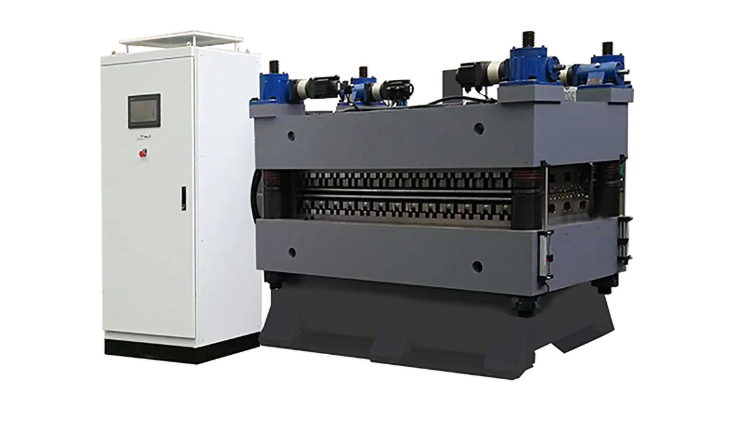Leveling machine is also called flatening machine, flat plate machine, straightener, straightening machine. The most formal name is sheet leveling machine
People have always had misunderstandings about straightener and leveler. straightening usually refers to the flatness of the plate surface.
The problem with a simple straightener is that the product looks flat and straight, but it still has high internal stress inside because the plate is not flattened to near or above the yield point (material Q235/yield strength is 235MPa). Their defects will be exposed in the next step (bending, welding and assembly). Therefore, it is crucial to produce flat and stress-free parts.
Leveling machines are mainly used to correct various specifications of plates and sheared plates. The machine can be used for leveling various cold and hot rolled plates.
Due to its convenient and simple operation, it is used in many industries such as machinery, metallurgy, building materials, chemicals, electronics, electricity, light industry, etc., especially in shipbuilding, locomotives, boilers and bridges, metal structure factories and other industries, and has become an indispensable product in production.
There are many structural forms of leveling machines. This structure is more reasonable, and the designed leveling machine is more solid. The support rollers on the leveling rollers can effectively support the leveling rollers, and the beams are relatively large and will not deform. There are also springs on the beams to pull to eliminate the gap between the beams on the leveling machine

Mechanical system
The four screw columns on the upper beam lock the inlet and outlet roller gaps between the upper and lower leveling rollers, and adjust them through the servo motor to ensure the constant outlet and leveling effect. The multi-axis gearbox is designed and manufactured by ourselves, and a single-stage gear transmission design is adopted.
The upper and lower leveling rollers correspond to the upper and lower multi-axis gearboxes respectively. The leveling drive system adopts direct-connected transmission,
which has high transmission efficiency, high force, low noise and long service life. The efficient and precise operating system can quickly adjust the inlet and outlet gaps, is easy to operate, adopts a self-lubricating system, does not use circulating lubrication, reduces maintenance work and reduces costs
Hydraulic system
The leveling machine is provided with an upper die and a lower die, wherein the upper die is fixed to the push rod of the hydraulic cylinder, and the cylinder body of the hydraulic cylinder is fixed to the support frame. An independent cooling water circuit is provided in each of the upper die and the lower die, and the outlet and inlet of the
cooling water circuit are respectively located on the upper die or the lower die. The radius/center distance ratio of at least the first 5 rollers starting from the entrance of the leveling machine is the same as that of the traditional leveling machine, and the radius/center distance ratio of at least the last 5 rollers starting from the entrance of the
leveling machine is similar to that of the curling elimination machine, and the advantage is that the center distance between the middle rollers of the leveling machine is increased. It can prevent the impurities from corroding the tool or the tool blank during rapid quenching and cooling, thereby ensuring the quality of the surface and hardness metallographic structure of the tool or the tool blank and avoiding the pollution of the cooling oil.
Application scenarios
Mechanical leveling machine: suitable for occasions with low flatness requirements and slow production speed, such as small and medium-sized steel plate mills and certain specific processing workshops.
Hydraulic leveling machine: suitable for occasions with high flatness requirements and fast production speed, such as large steel mills, aluminum plate mills and other metal processing enterprises that require high-precision leveling.


